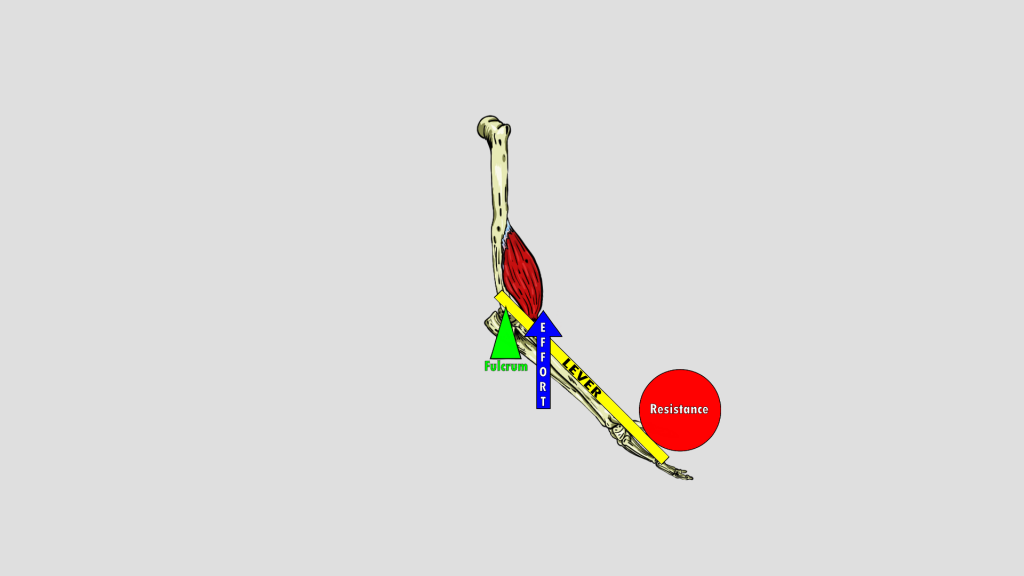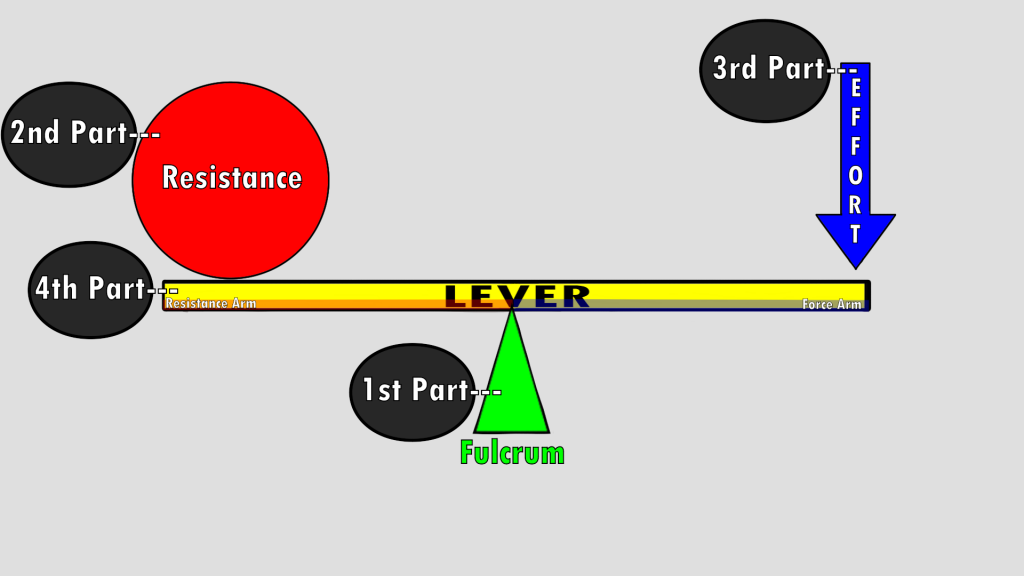
3 Classes of Levers
Let’s talk about levers and how we use these levers in everyday life and inside our bodies to produce movement, increase force, and make directional changes. Levers are one of the simplest forms of a machine. A lever is a simple machine that allows you to gain a mechanical advantage in moving an object or in applying a force to an object.
A lever is a simple machine that consists of 4 parts 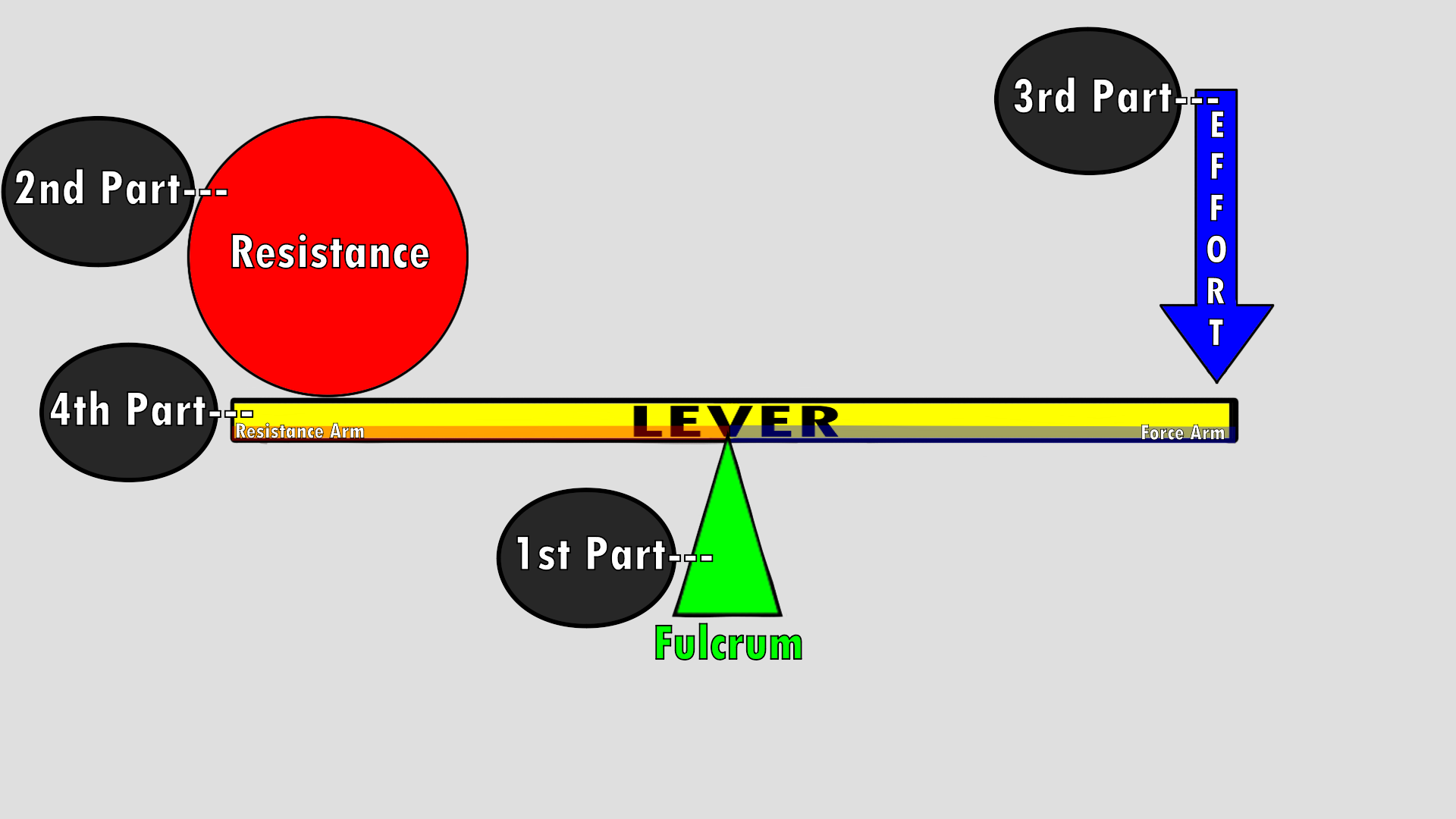
- The 1st part is The Fulcrum, known as the pivot point, axis, or balance point,
- The 2nd part is the Resistance or load
- The 3rd part is the Effort Force
- The 4th part is the Lever Arm, which can be divided into 2 seperate parts, The Force Arm and The Resistance arm.
Now the main function of a lever is to gain a mechanical advantage in moving an object or gaining force. Mathematically the mechanical advantage is determined by dividing the force arm by the resistance arm.
Force Arm / Resistance arm =______
And equilibrium is achieved by the Effort x Force Arm = Resistance x Resistance arm
So if the resistance and effort are the same weight and same distance from the fulcrum, nothing will move. The lever will be in equilibrium.
So let go over the three types of levers and then at the end we will go over how we use those levers inside of us.
1st Class Lever
1st we will look at The first Class lever. It’s set up with the Fulcrum in the middle with the Effort and Resistance on the sides.
The function of this 1st class lever is to change directions
The Mechanical advantage can be less than < or greater then > 1.
If you recall you can determine the mechanical advantage by dividing the force arm by the resistance arm.
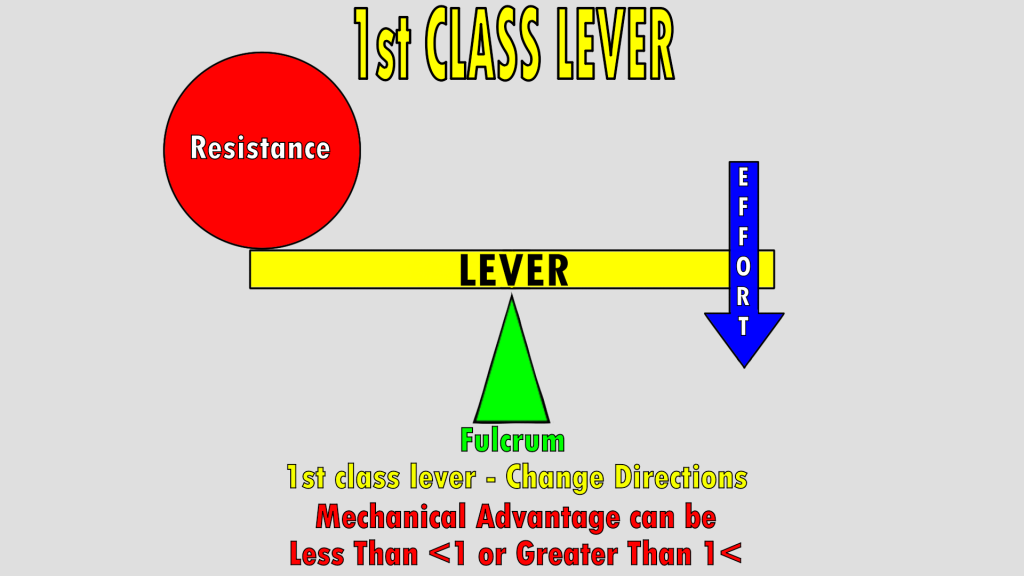
A comparable real world item would be the seesaw, Like the one with these twins are sitting on.
The Fulcrum is in the middle, with each twin acting as the resistance or effort force…. depending on which one is changing direction.
For example, we have Patty at 200lbs and Sara at 100lbs. In order for Sara @ 100lbs to move Patty @ 200lbs, Sara would have to increase the mechanical advantage >1 At least 2 times the distance from the fulcrum. And on the other end Patty can decrease her Mechanical advantage to less than 1 because she has twice as much force then the resistance.
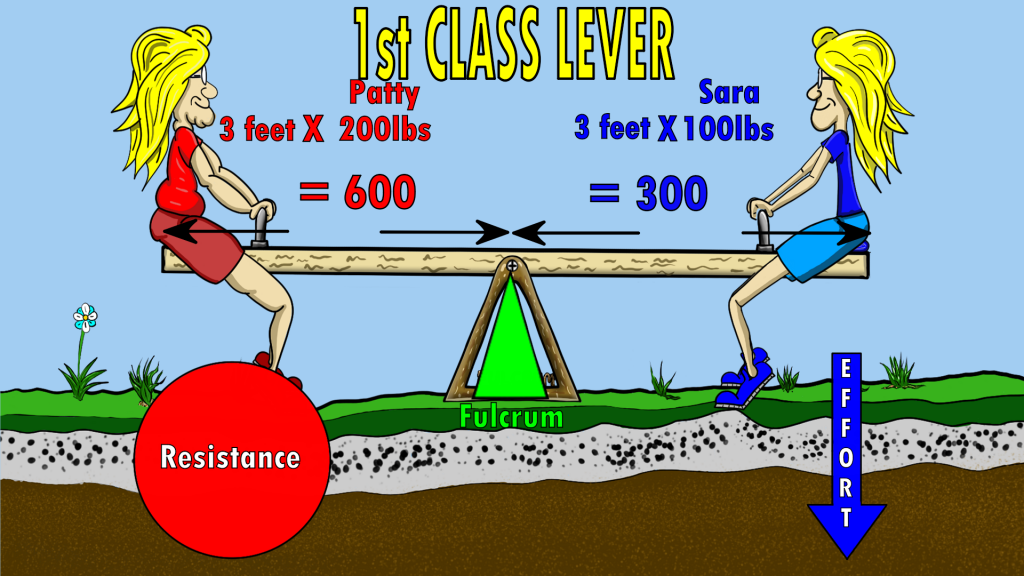

2nd Class Lever
Now lets talk about the 2nd class lever.
It is set up with the resistance in the middle of the effort force and the fulcrum.
It’s function is Increase Force, with ROM being sacrificed.
The Mechanical advantage is always greater than >1.
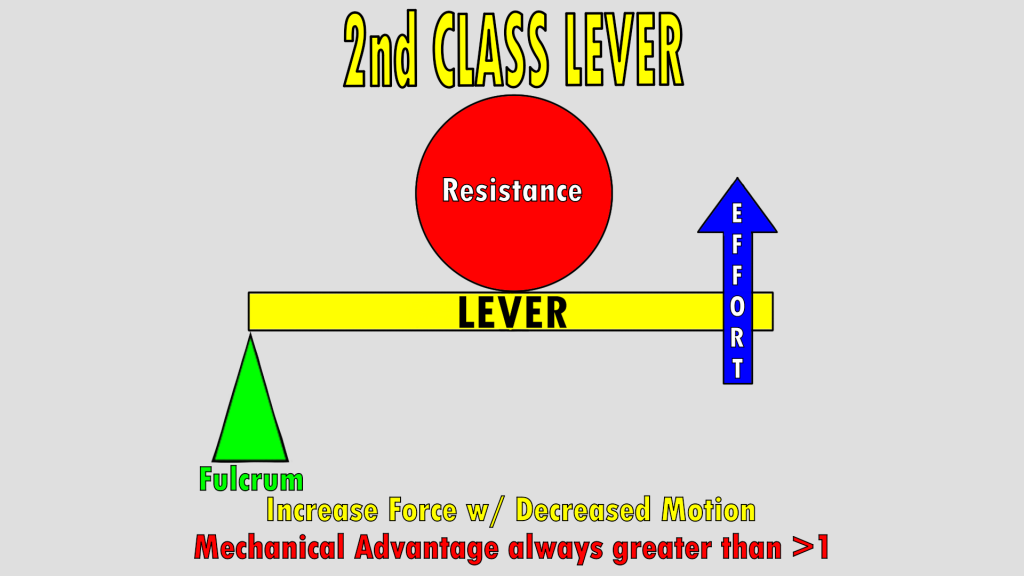
The common real world item that uses this lever would be a wheelbarrow.
The wheel is acting as the fulcrum, with the rock being the resistance in the middle, and effort force would be the human force.
The mechanical advantage is always greater than >1 because the Force arm is always going to be longer than the resistance arm.
Imagine this rock weighed 100lbs, and the force arm is twice as long as the resistance arm, the 100lbs would feel like 50lbs, if the force arm was 4x’s as long, the 100lbs would feel like 25lb, however the longer the force arm, the less ROM you will get.
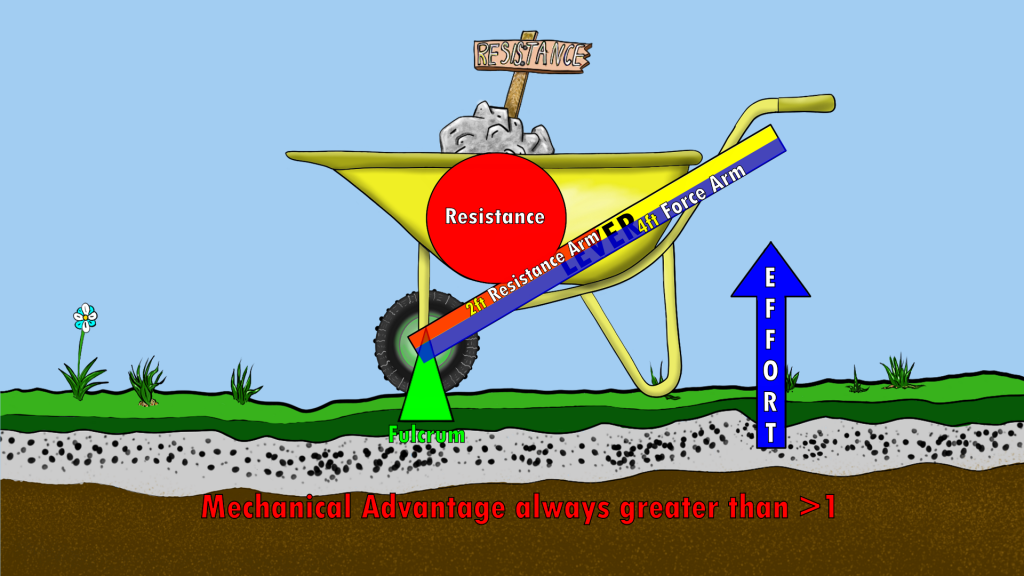

This allows you to increase your force produced, however you lack ROM with this lever.
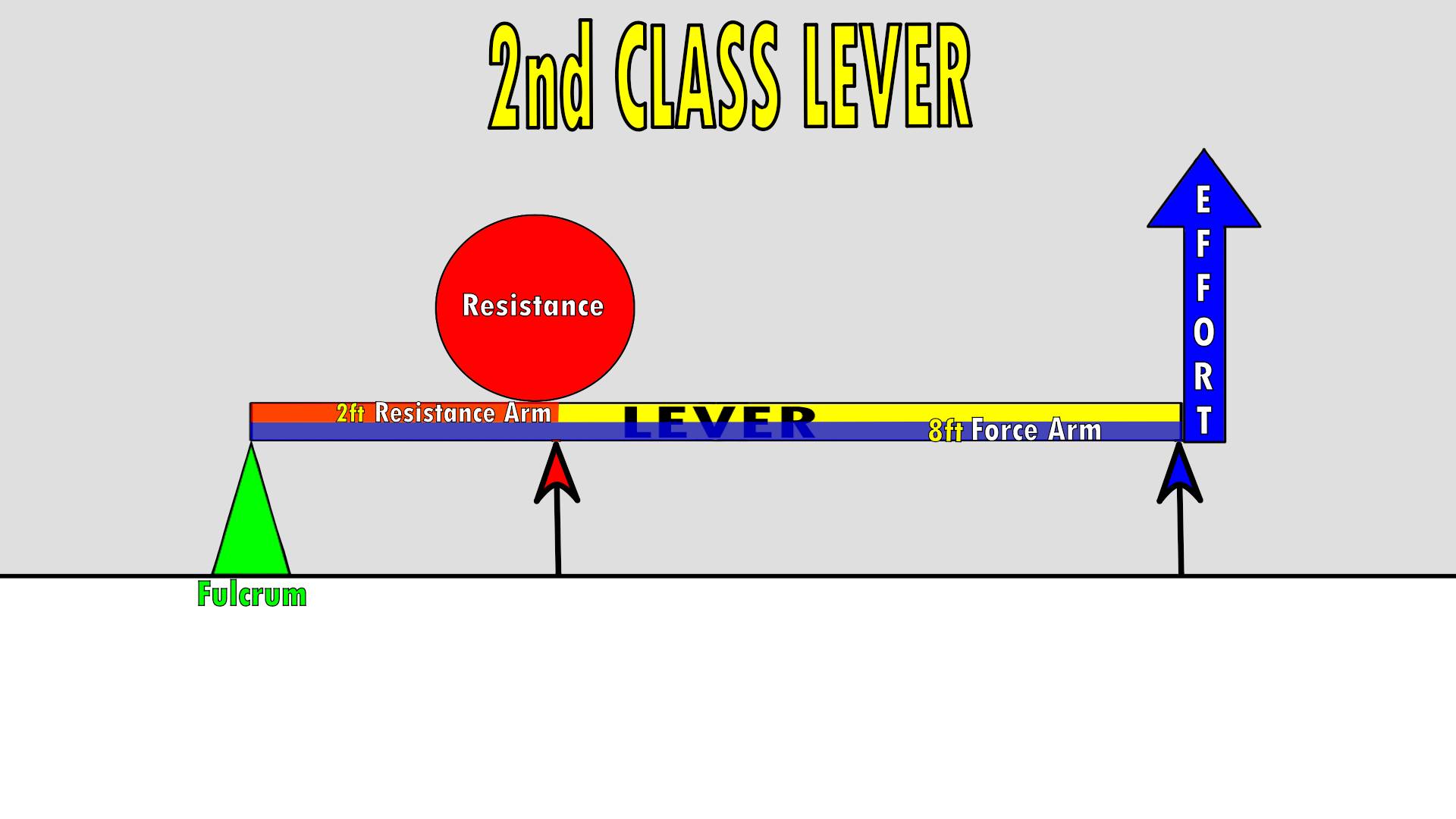
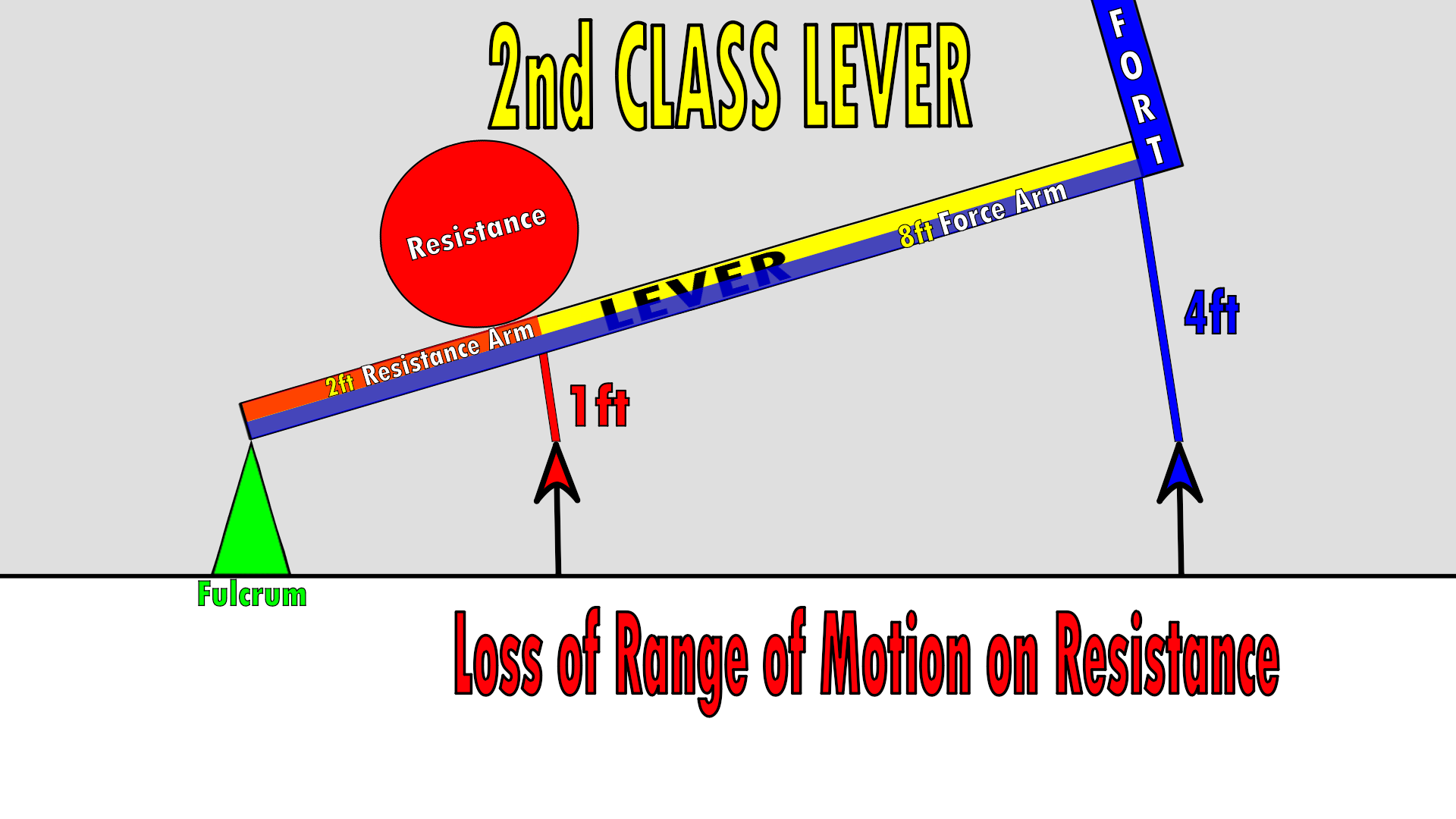
The 3rd Class Lever
The final lever, is the 3rd class lever.
The Effort is located in the middle of the resistance and the fulcrum.
The function of this lever is to gain distance
With the mechanical advantage always being less than <1
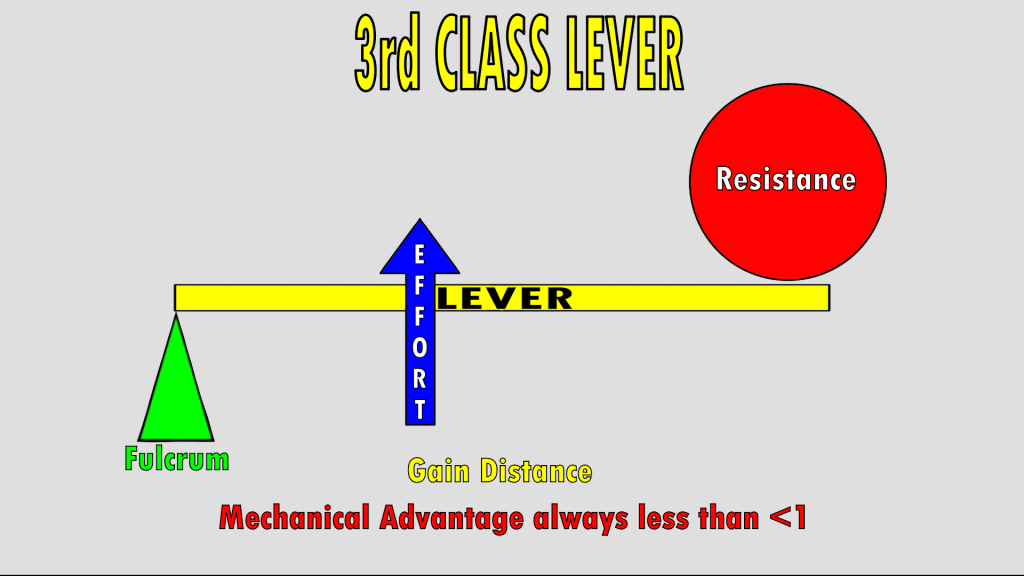
The common real world item would be hotdog tongs
With the force arm being shorter than the resistance arm
The fulcrum would be where the tongs connect, the effort is applied to the center of the tongs, with the hotdog being the resistance.
This is the most common used lever in the human body.
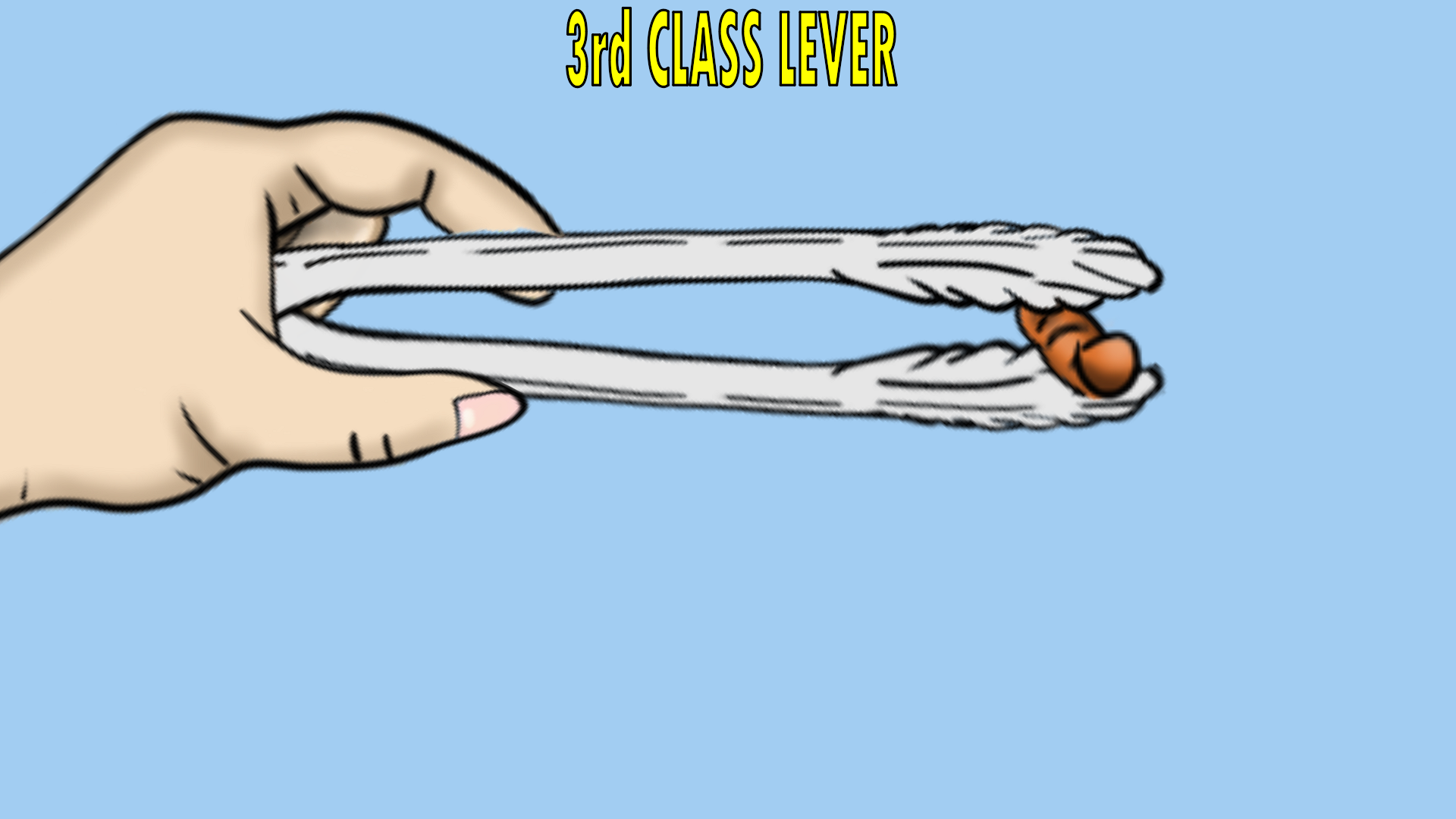

Study Tip on Remembering the Three Classes of Levers
A good way to remember which lever is which, Is the word FREE, but with one E. So spell it FRE.
Spell it out ”F” “R” “E”
1st class lever is the F with the fulcrum in the middle.
2nd class lever is the R with resistance in the middle
3rd class would be the E , with the effort in the middle.
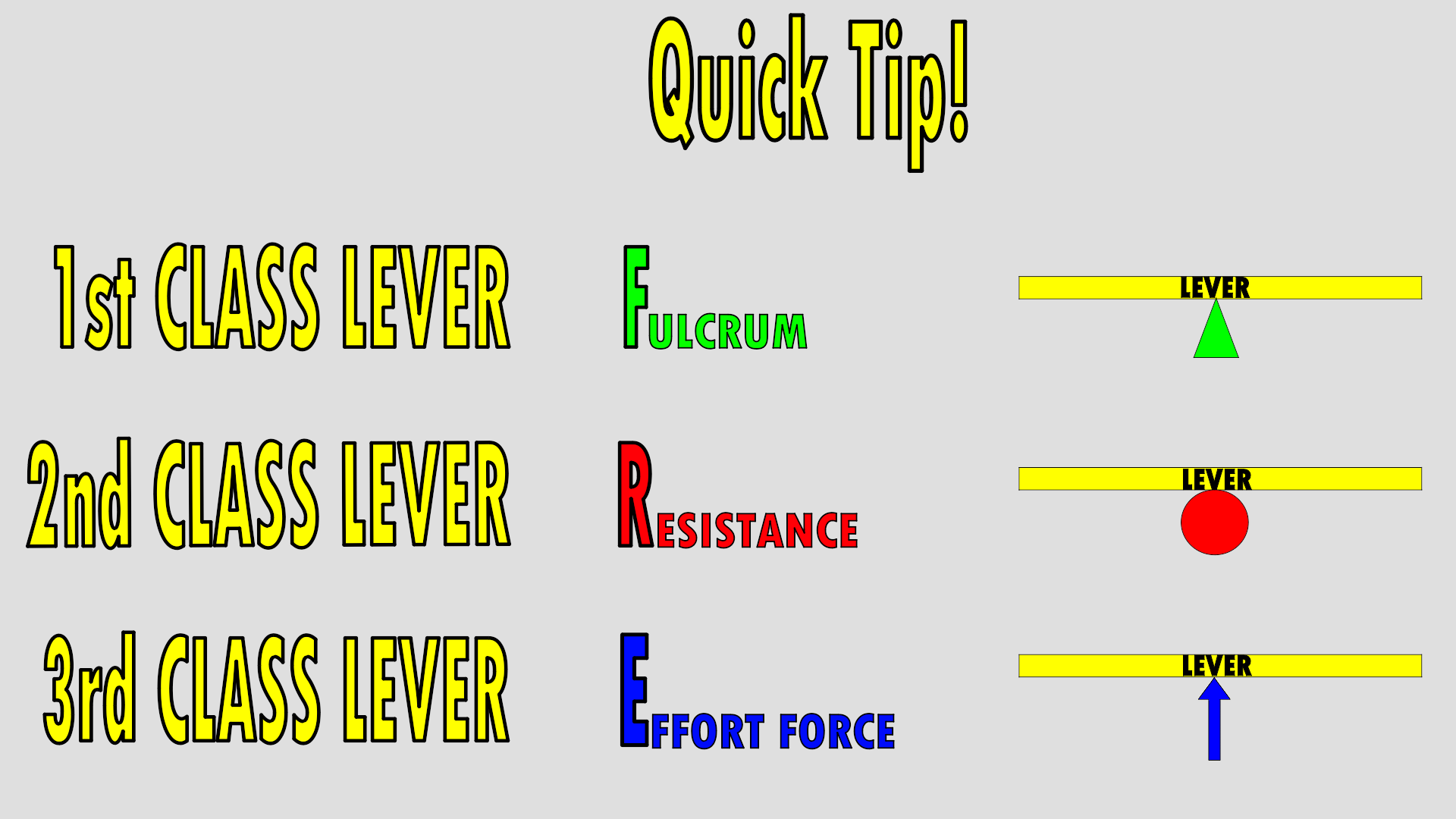
Levers in The Human Body
Lets talk about the levers in the human body
A 1st class lever would be the Human head sitting on the spine.

The fulcrum would be in the middle “The Spine”.
The neck muscles would be the effort force
And the weight of the head would be the resistance.
The function is to change direction. So when the muscle contracts, it creates force, causing a change in direction.
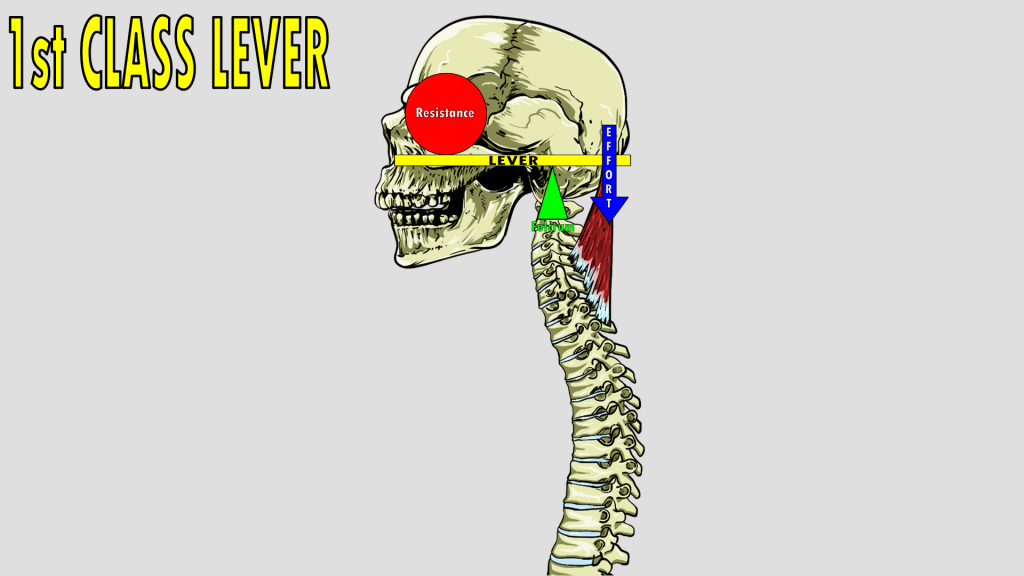
A 2nd class lever would be raising your heels off the ground.
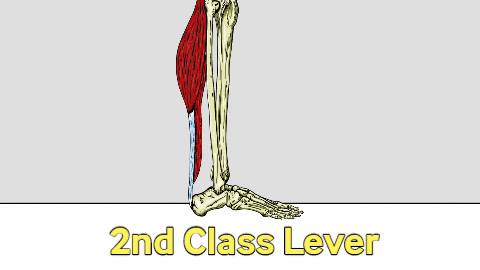
The resistance is in the middle. And it’s the weight of the body
The fulcrum would be your toes
And the gastrocnemius muscle would be the effort force.
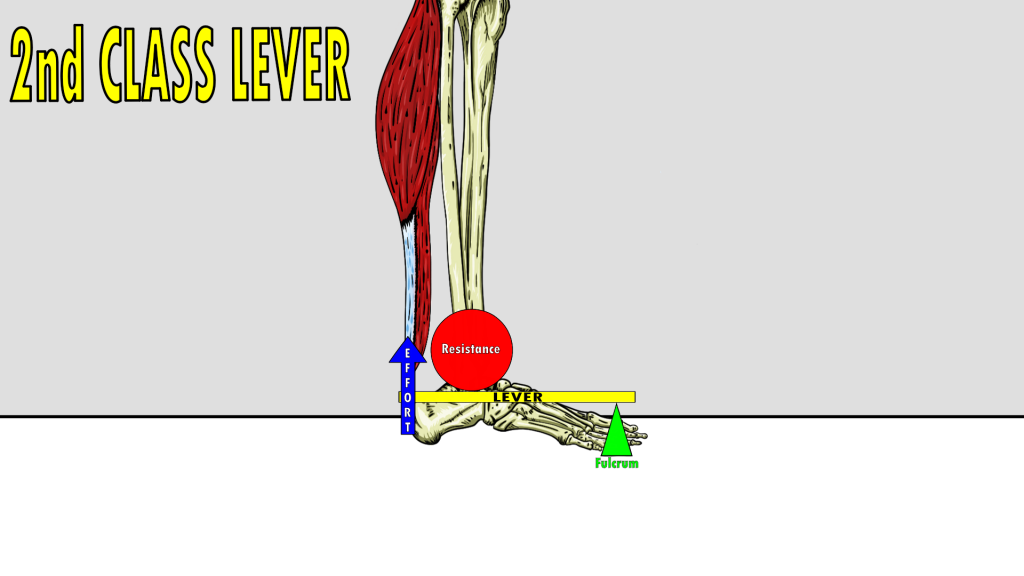
The 3rd class lever is the most common lever in the human body.
In this case, we are looking at aarm and elbow joint.
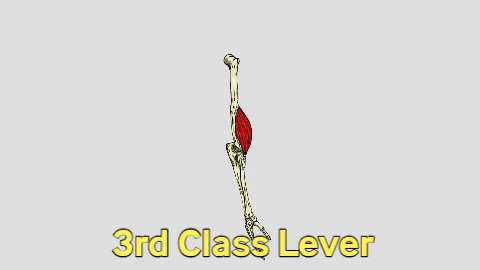
This is the 3rd class lever, so we know the Effort force is in the middle, this is where the brachialis muscle inserts.
The elbow joint would be the fulcrum
And the resistance would be the hand or whatever the hand is holding.
